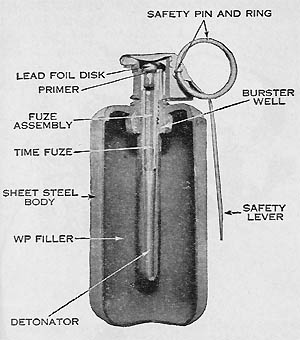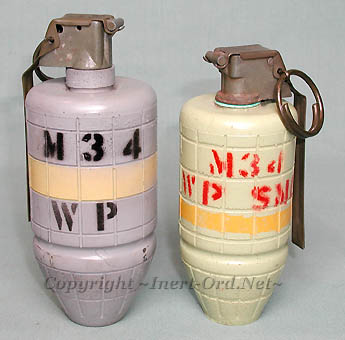

This is a bursting type grenade, scattering phosphorus particles over a 25 yard diameter area. WP produces an instantaneous dense white smoke upon exposure to air, burning at 5000°F for 60 seconds. WP grenades were developed for screening purposes, but they were found to be effective anti-personnel weapons as well..
The body is made from 18 gage steel and the fuze is a M6 or M206 detonating type.
(M6 Shown here.)
